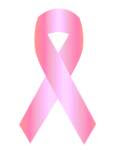A study from Denmark published on bmj.com today finds no effect of the Danish screening programme on breast cancer deaths.
Similar results have been seen in other countries, including the UK, leading the authors to question whether screening has delivered the promised effect on breast cancer mortality.
A 2005 study suggested that screening had reduced breast cancer deaths by 25% in Copenhagen. But Karsten Jørgensen and Peter Gøtzsche from the Nordic Cochrane Centre in Copenhagen, together with Per-Henrik Zahl from Folkehelseinstituttet in Oslo, identified important problems in this study and decided to undertake a more comprehensive analysis of the data.
They compared annual changes in breast cancer deaths in two Danish regions offering publicly organised screening programmes (Copenhagen and Funen county) with non-screened regions across the rest of Denmark.
Their analysis covered 10 years after screening could have had an effect on breast cancer mortality. For comparison, they also looked at the 10-year period before screening was introduced.
Data for each area were divided into three age bands. Women aged 55-74 years, who could benefit from screening, and women aged 35-55 years and 75-84 years, who were largely unaffected by screening.
They found that in women who could benefit from screening (55-74 years) breast cancer mortality declined by 1% per year in the screened areas and by 2% per year in the non-screened areas. In women too young to benefit from screening (35-54 years), breast cancer mortality declined by 5% per year in the screened areas and by 6% per year in the non-screened areas during the same period.
source: EurekAlert
3.27.2010
Study questions whether screening really cuts breast cancer deaths
3.20.2010
Intelerad to Showcase IntelePACS Breast Imaging at the 20th Annual National Interdisciplinary Breast Center Conference
Intelerad Medical Systems will be demonstrating the new IntelePACS® Breast Imaging fully-integrated, multi-modality mammography solution at the 20th Annual National Interdisciplinary Breast Center Conference.
IntelePACS Breast Imaging provides radiologists with instant access to a universal multi-modality worklist that drives the workflow and viewing process, answering the specific needs of high-volume mammography imaging departments and businesses. Radiologists can report studies securely over wide area networks, working collaboratively by accessing images and reports from any location. Robustness in image storage and delivery, including the use of compression to optimize transmission over any network are just some of the strengths of IntelePACS.
“IntelePACS Breast Imaging with its universal worklist eliminates the need for dedicated workstations, and gives access to multi-modality images regardless of where our radiologists read from. We especially like that the viewing tools are fully customizable offering us a high degree of control for image viewing. Workflow optimization within a single unified PACS environment will quickly ensure productivity gains and faster report turnaround times to patients and a better service to our referring physicians.” Peter Ricci, MD, Radiology Imaging Associates / Invision, Sally Jobe Breast Network.
source: Intelerad
3.15.2010
PEM scanners may reduce unnecessary breast biopsies and offer an alternative for women who cannot tolerate MRI.
SAN DIEGO, CA – March 15, 2010 – New data from an
NIH-sponsored, multi-site study of hundreds of women
with newly diagnosed breast cancer shows that
Positron Emission Mammography (PEM) may reduce
unnecessarybreast biopsies. The study found that
PEM was significantly more precise at identifying
benign and cancerous lesions, in what scientists
call “Positive Predictive Value” or “PPV,” therefore
reducing the number of unnecessary biopsies. A
common physician complaint regarding the use of Breast
MRI is its tendency to identify suspicious lesions,
requiring biopsies on lesions that ultimately are
found to be benign.
This finding is a welcomed outcome for women and
physicians looking for ways to reduce the patient
trauma associated with biopsies and for payors
looking to reduce the costs associated with unnecessary
procedures. The 388 woman study showed that PEM not
only demonstrated a six percent im provement in
specificity at comparably high sensitivity, but that
PEM also had 31 fewer unnecessary biopsies and 26%
higher PPV than Breast MR. These results are also
particularly significant for those women who cannot
tolerate an MR exam and require an alternate imaging tool.
source: Naviscan
3.09.2010
MRI Finds Tumors In Second Breast Of Women Diagnosed With Cancer In One Breast
Postmenopausal women, including those over 70 years old, who have been newly diagnosed with cancer in one breast have higher cancer detection rates when the other breast is scanned for tumors with MRI, compared to premenopausal women, say researchers at the Mayo Clinic campus in Florida.
They found that 3.8 percent of 425 women had breast cancer in the undiagnosed breast that had not been found with a clinical or mammographic examination; all were postmenopausal. In these women, detecting and treating cancer in both breasts at the same time may save costs, patient stress, and the potential toxicity that may come from having to treat cancer later in the second breast once it is discovered, the researchers say in the March/April issue of The Breast Journal.
source: Medical News Today
